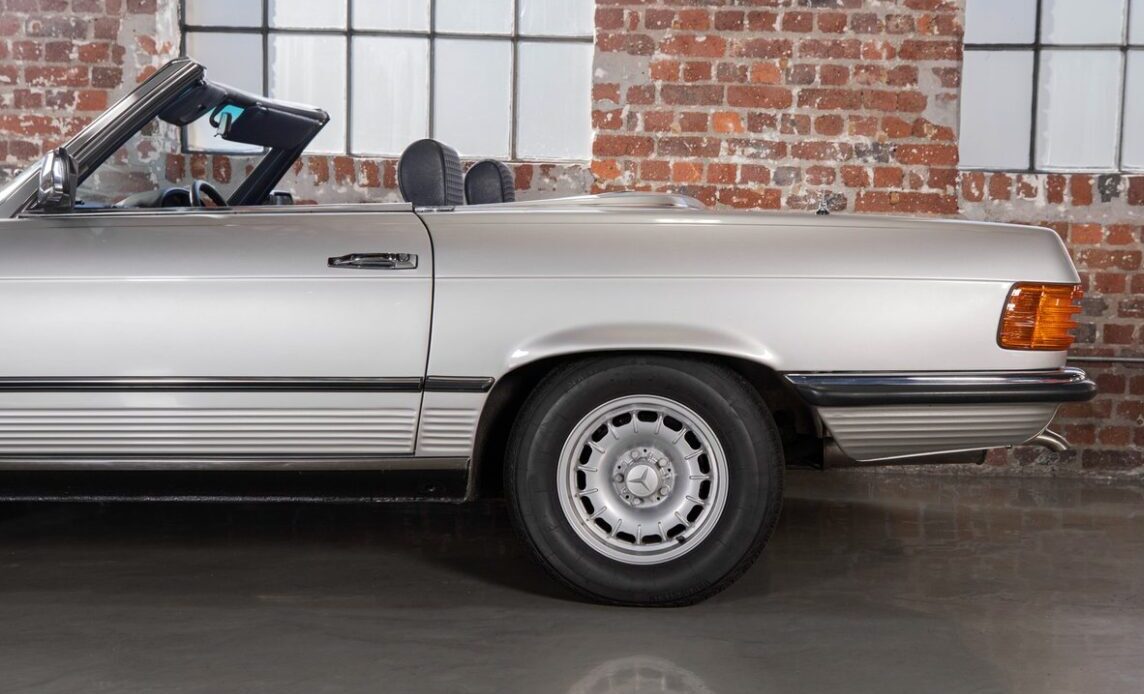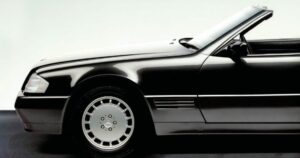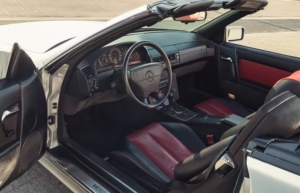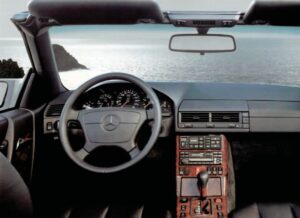Mercedes-Benz SL: A timeless icon
1. The Mercedes-Benz SL in 1995: A year of refinement and prestige
2. Rising costs and subtle changes
3. The Mille Miglia special edition
4. Interior options and refinements
5. Leadership changes and market shifts
The Mercedes-Benz SL in 1995: A year of refinement and prestige
The 1995 model year marked an important chapter in the story of the Mercedes-Benz SL (R129). By then, the car had already established itself as a symbol of elegance, innovation, and performance, and the latest line-up only reinforced that reputation. Five distinct models were on offer, each catering to a slightly different kind of driver.
The entry-level SL280, priced at around €60,300 with a five-speed manual gearbox, represented the most accessible option. Moving up the range, the SL320 was listed at €66,100 and came standard with a five-speed automatic. The SL500, with its V8 power, commanded €83,500, while the flagship SL600 V12 sat at an impressive €114,300. For those seeking something even more exclusive, there was the SL60 AMG, priced at €101,300, a machine blending luxury with AMG’s performance expertise.
Rising costs and subtle changes
As with many premium cars of the era, optional extras were not cheap. Air-conditioning saw a slight increase, while adaptive suspension climbed to €3,370. Interestingly, the five-speed automatic gearbox for the SL280 was reduced to €1,860, even as the older four-speed version crept up in price. Leather trim, AMG wheels, and other luxuries also saw modest increases, though most options remained stable.
Visually, 1995 brought only subtle updates. Following the facelift of the S-Class, the SL received new clear indicator lenses for the domestic market. North American cars, however, were fitted with a version that blended clear and amber sections—an adaptation that soon spread to markets like the UK, Japan, Australasia, and South Africa. Behind the scenes, mechanical improvements included a new fuel pump system, flexible piping, and yet another revision of the steering lock. Even the roll-over bar system was simplified to streamline production.
The Mille Miglia special edition
Perhaps the most exciting news of 1995 was the launch of the Mille Miglia edition at the Geneva Motor Show. This was the first globally released limited-edition R129, commemorating Mercedes-Benz’s legendary 1955 Mille Miglia victory. Appropriately, the first car went to Stirling Moss himself, who famously drove the winning 300 SLR that year.
Based on either the SL320 or SL500, the Mille Miglia featured Brilliant Silver paintwork, polished six-spoke alloys, unique badging, and striking two-tone black-and-red leather upholstery with red stitching. Carbon fiber replaced the traditional wood trim, and US-style indicator lenses were fitted as standard. Just 630 examples were produced, instantly making it one of the most collectible SLs of the era.
Interior options and refinements
By 1995, buyers could choose from four cloth trims, six regular leather colors, and three exclusive leather combinations, each featuring contrasting piping. Walnut remained the standard interior wood, and the classic trio of soft-top colors—black, blue, and brown—was carried over. Small but important technical refinements also appeared, such as redesigned intake manifolds for the six-cylinder models and a sliding joint for the prop shaft, bringing them in line with the V8 and V12 versions.
Leadership changes and market shifts
On the corporate side, May 1995 brought new leadership, with Jürgen Erich Schrempp replacing Helmut Werner as Chairman of the Board. It was a pivotal moment, coinciding with the launch of the W210 E-Class, which hinted at the brand’s evolving design language.
Market reactions varied around the world. In the UK, prices increased, leaving the SL280 at roughly €76,300 and the SL600 just shy of €137,000. Interestingly, Japanese buyers saw the opposite trend, with prices dropping by the equivalent of several thousand euros depending on the model. In Australia, prices held steady compared to 1994.
The American perspective
In the United States, 1995 did not bring sweeping changes, but the market welcomed AMG models—though not the SL60 AMG, which failed to meet emissions standards. Still, the SL600 was offered with a portable cellphone option for €850, while the fixed unit remained standard.
American media praised the SL, particularly the SL600. Road & Track compared it to rivals like the BMW 850Ci, Ferrari 456GT, and Jaguar XJS, ultimately concluding that the Mercedes offered the best blend of comfort, safety, and craftsmanship for long-distance touring. Editor Thomas Bryant even admitted that if he could own any car in the world, the SL600 would make his shortlist.
Sales reflected this appeal. A total of 6,964 SLs were sold in the US in 1995, including 609 SL600s, 2,184 SL320s, and 4,171 SL500s—an increase of about 1,000 units compared to the previous year.
Legacy of 1995
The 1995 model year may not have introduced groundbreaking redesigns, but it showcased Mercedes-Benz’s commitment to refinement and exclusivity. From subtle mechanical updates to the Mille Miglia special edition, the R129 continued to evolve with grace and authority. More than just a grand tourer, the SL of 1995 was a statement of taste, luxury, and performance—qualities that ensured its place as one of the most iconic cars of the decade.
Are you already a proud owner of a Mercedes R129? If so, check out our selection of parts for this car at the following link:
https://octoclassic.com/product-category/mercedes-benz/r129
Photo sources: thecollectables.nl, crossley-webb.com











